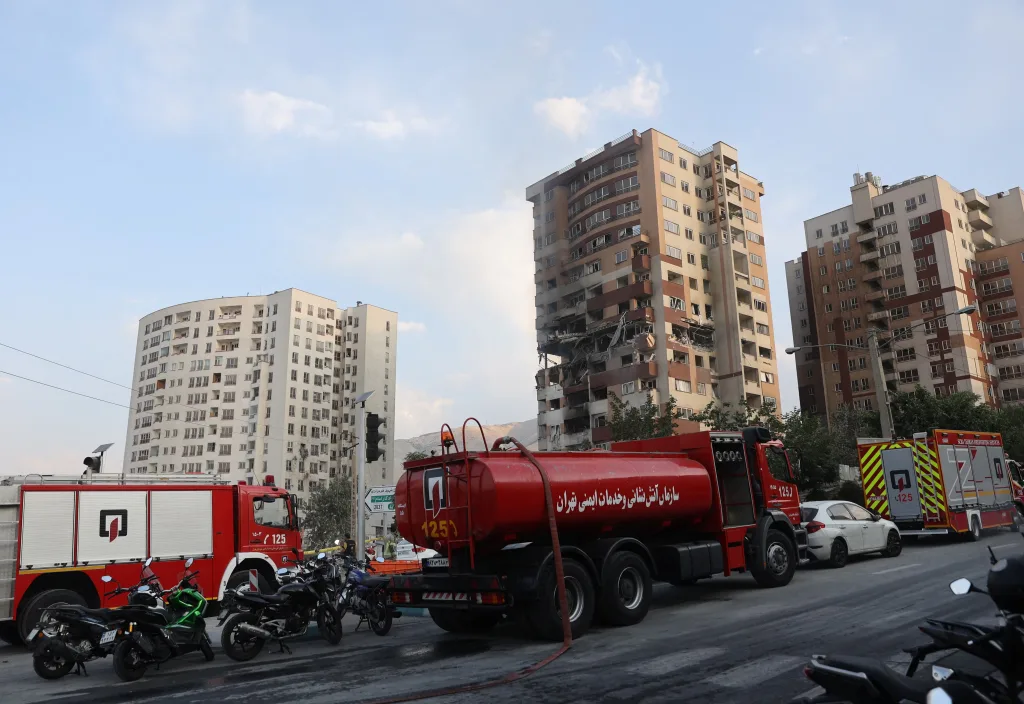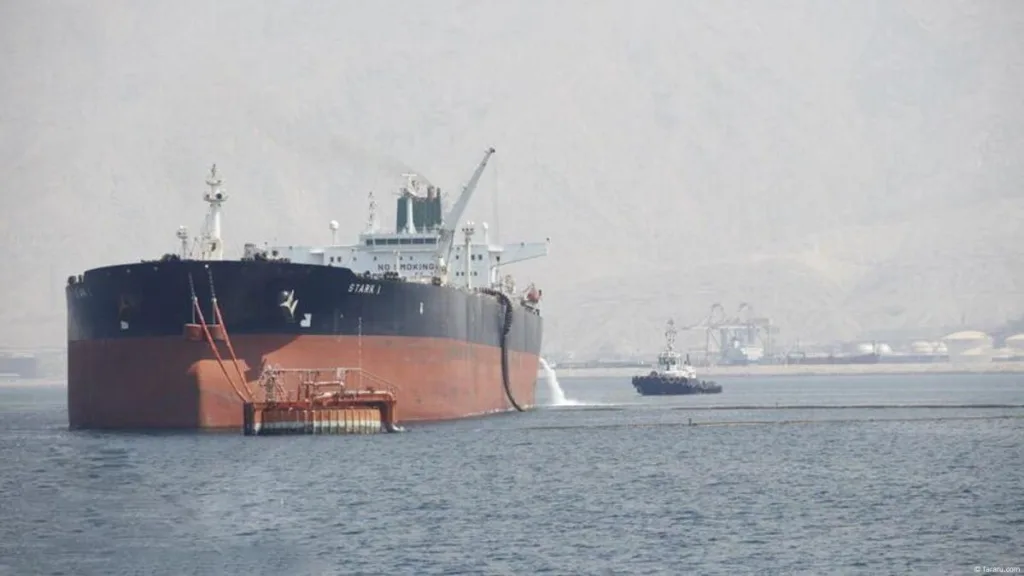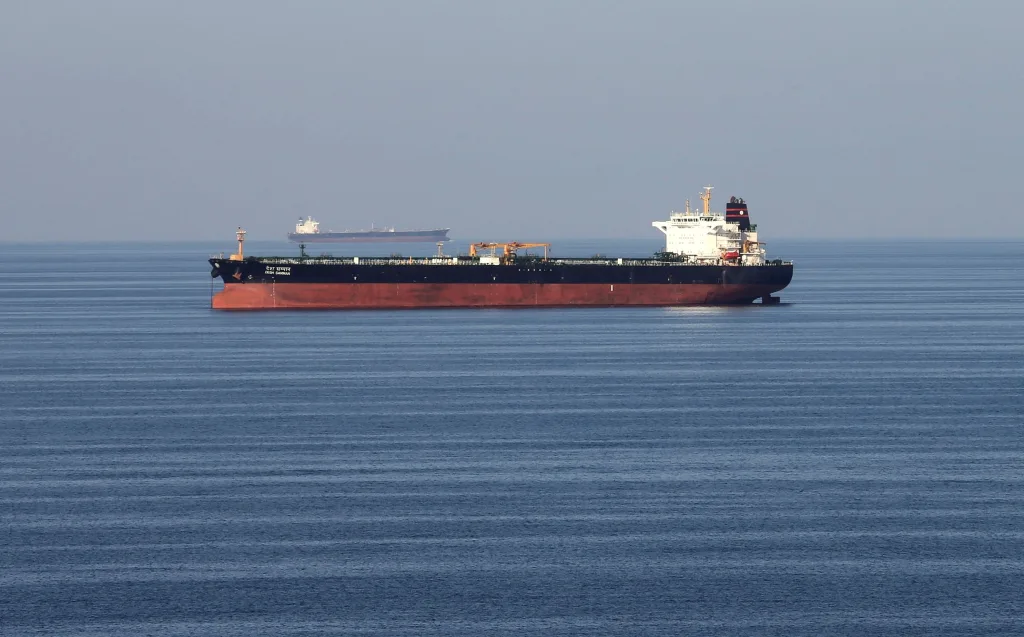The global energy landscape has been thrust into chaos as escalating tensions between Iran and Israel send shockwaves through international oil markets, creating one of the most significant energy security crises in recent memory. The recent exchange of military strikes between these Middle Eastern powers has transformed from a regional conflict into a global economic concern, with oil prices surging dramatically and energy markets exhibiting unprecedented volatility.
The strategic importance of the Strait of Hormuz, through which approximately 20 percent of the world’s oil supply flows daily, has become the focal point of international concern as Iran threatens potential closure of this critical waterway. Financial markets are reacting with alarm as Brent crude prices have jumped over 7 percent in just days, reaching levels not seen since January, while major stock indices tumble under the weight of energy security fears.
The ripple effects extend far beyond energy markets, threatening to derail recent progress in controlling global inflation and potentially triggering a cascade of economic disruptions that could impact everything from consumer prices to international trade. As shipping companies reroute vessels and airlines suspend flights across the region, the world watches nervously to see whether diplomatic solutions can prevent this regional crisis from evolving into a global energy catastrophe.
Table of Contents
Iran-Israel Current State of Oil Market Volatility
The immediate impact on global oil markets has been both swift and severe, with energy traders scrambling to assess the full implications of Iran-Israel hostilities on global supply chains. Brent crude prices, which are considered the international standard, are 5 percent higher than yesterday’s market close, while oil prices surged, with Brent crude rising 7.86% to $74.81 per barrel and West Texas Intermediate up 8.42% to $73.77, marking the highest levels in nearly five months. The magnitude of these price movements reflects the market’s deep concern about potential supply disruptions in one of the world’s most critical energy-producing regions.

The volatility extends beyond crude oil into broader financial markets, where uncertainty about energy security has triggered widespread selling across major indices. The S&P 500 tumbled 1.1 percent, the Dow Jones Industrial Average is down 1.7 and the Nasdaq is 1.3 percent lower. This market reaction underscores how deeply interconnected global financial systems have become with Middle Eastern energy security, where regional conflicts can instantly translate into worldwide economic turbulence.
Oil futures experienced even more dramatic spikes during peak trading hours, spiking more than 13 percent at one point, reaching their highest levels since January. These extreme movements indicate that energy markets are pricing in significant risk premiums, reflecting trader concerns about potential escalation scenarios that could severely disrupt global oil supplies.
The Strategic Importance of the Strait of Hormuz
The Strait of Hormuz represents the world’s most critical energy chokepoint, making it the epicenter of global concerns about potential supply disruptions amid escalating Iran-Israel tensions. Any closure of the Strait of Hormuz, a strategic trade route between the Arabian Gulf and the Gulf of Oman, through which roughly 20 percent of the world’s global oil output travels, would likely drive oil prices even higher. The strategic geography of this narrow waterway gives Iran significant leverage over global energy markets, as any disruption could immediately affect millions of barrels of daily oil flow to international markets.
The economic implications of potential Strait closure extend far beyond immediate price spikes, threatening to reshape global energy security paradigms. Goldman Sachs estimates that oil prices could blow past $100 a barrel if there is an “extended disruption” to the Strait of Hormuz, because such an unlikely event could prevent core OPEC producers, like Saudi Arabia and the United Arab Emirates, from ramping up production. Such price levels would represent a doubling of current costs, with catastrophic implications for global economic stability and consumer purchasing power.

The psychological impact of Strait closure threats may prove as significant as actual disruptions, as markets react to even the possibility of such scenarios. Iran has previously threatened to close this critical trade route in response to Western pressure. Even the suggestion of such a move has already sent shockwaves through global markets, and the price of oil has risen. This demonstrates how geopolitical tensions in the Middle East can create immediate economic consequences worldwide, regardless of whether threats are actually implemented.
Impact on Global Inflation and Consumer Prices
The surge in oil prices threatens to undermine recent progress in controlling global inflation, potentially reversing months of economic stabilization efforts by central banks worldwide. This could intensify inflationary pressures globally, and particularly in the US, where energy costs represent a significant component of consumer price indices and household budgets. The timing of this energy crisis is particularly concerning given recent optimism about inflation trends and economic stability.
Recent economic data had provided encouraging signs about price stability, with consumer price increases showing moderation and energy costs actually declining in some markets. The price surge comes on the heels of a better-than-expected Consumer Price Index report in the US earlier this week, which showed prices increased by just 0.1 percent for the month. Energy costs remain a key inflation driver. Petrol prices, in fact, fell 2.6 percent during the period. However, the current energy crisis threatens to completely reverse these positive trends, potentially forcing central banks to reconsider monetary policy approaches.
Financial analysts warn that sustained energy price increases could trigger broader inflationary spirals affecting multiple sectors of the economy. “Our comfort zone remains with oil prices in the $60-65 range, as sustained gains could severely impact inflation, reversing months of cooling in U.S. consumer prices,” JPMorgan’s Natasha Kaneva wrote on Friday morning. The prospect of returning to high inflation environments creates significant challenges for policymakers who had been optimistic about economic recovery prospects.

Emergency Reserve Strategies and Market Response
International energy agencies are preparing contingency plans to address potential supply disruptions, though the effectiveness of these measures remains uncertain given the scale of potential crisis scenarios. If shipping through the critical seaway were suspended, even temporarily, the International Energy Agency said it is well supplied to release emergency reserves, if needed. However, that comes with the risk of depletion. The strategic petroleum reserves represent a critical buffer against supply shocks, but their capacity is finite relative to global consumption needs.
The mathematics of emergency reserves highlight the limitations of current contingency planning in face of extended disruptions. There are 1.2 billion barrels in its strategic reserves. The world uses about 100 million barrels of oil per day. These figures indicate that while emergency reserves could provide temporary relief during short-term disruptions, any extended closure of critical shipping routes would quickly exhaust available stockpiles, potentially creating even more severe supply crises.
OPEC’s response to emergency reserve discussions reveals tensions within international energy governance structures, with producing nations resisting implications that current supply situations require emergency interventions. OPEC Secretary-General Haitham al-Ghais criticised the IEA for its statement that it could release strategic reserves, saying it “raises false alarms and projects a sense of market fear through repeating the unnecessary need to potentially use oil emergency stocks”. This disagreement between consuming and producing nations complicates coordinated responses to energy security threats.
Potential Escalation Scenarios and Market Predictions
Energy analysts are modeling increasingly severe disruption scenarios as Iran-Israel tensions continue to escalate, with some predicting oil price levels that could trigger global economic recession. “If it does rise to the level of closing the Strait of Hormuz, well, now that’s going to be the biggest oil shock of all time,” Matt Gertken, chief geopolitical strategist and senior vice president at BCA Research, a macroeconomic research firm, told Al Jazeera. Such extreme scenarios would represent unprecedented challenges for global energy security and economic stability.
The potential for regional conflict expansion creates additional supply disruption risks beyond the immediate Iran-Israel confrontation, threatening multiple oil-producing regions simultaneously. “We should assume that we’re going to lose both Iranian and Iraqi oil production, which brings us to the point where we could be seeing five to seven million barrels per day taken offline,” Gertken told Al Jazeera. The loss of such massive production capacity would create supply deficits that no combination of strategic reserves and increased production from other sources could adequately address.

Geopolitical strategists suggest that Iran may deliberately target regional oil infrastructure to maximize economic pressure on Western nations while maintaining plausible deniability. “They have to take out some oil supply, but not attack Saudi Arabia or close the Strait of Hormuz because, of course, that would ensure that the US enters the conflict. They need to target some regional production [where] they can have plausible deniability [and blame] some militant group”. This strategic calculation could lead to prolonged supply disruptions without triggering the massive military response that direct attacks on major infrastructure would provoke.
Frequently Asked Questions
How would a Strait of Hormuz closure affect global oil prices and supply?
A complete closure of the Strait of Hormuz would create the most severe oil supply crisis in modern history, potentially driving crude prices above $120 per barrel and removing approximately 20 percent of global oil supplies from international markets. The economic impact would be immediate and catastrophic, triggering widespread inflation, potential recession in major economies, and severe disruptions to transportation, manufacturing, and consumer goods sectors worldwide. Even a partial or temporary closure would likely push oil prices past $100 per barrel, representing a significant threat to global economic stability and recovery efforts.
What emergency measures are available to address oil supply disruptions from Middle East conflicts?
The International Energy Agency maintains strategic petroleum reserves totaling approximately 1.2 billion barrels, which could provide temporary relief during supply disruptions, though these reserves would last only about 12 days at current global consumption rates of 100 million barrels daily. Additional measures include coordinated releases from national strategic reserves, increased production from OPEC+ members with spare capacity, and temporary demand reduction programs. However, the effectiveness of these measures depends heavily on the duration and scale of supply disruptions, with extended conflicts potentially overwhelming available emergency response capabilities.








